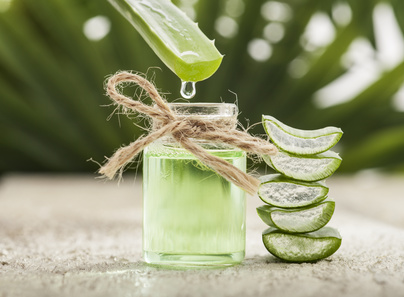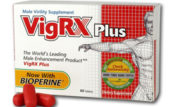 Stop me if you’ve heard this one: Toners are for printers.
Stop me if you’ve heard this one: Toners are for printers.
Heard it? It’s a popular mantra among some in the skin care industry, yet a call to arms for others.
You’ll encounter two sides to the toner debate. On the one side are the skeptics. They’re the ones who think it’s an unnecessary step after cleansing and before application of an appropriate moisturizer.
Yet it’s the folks on the other side of the toner debate, who recognize that your cleaner doesn’t get everything, that large pores are more susceptible to toxins and pollutants from the environment that can age the skin, that deserve your attention.
A toner plays an instrumental role in your daily skin care regimen. And it’s even more important in summer, when you’re outside and slathered up in sun screen.
With this being said, folks have different skin types, and with different products to suit their needs. You’ll want to use an astringent, for example, if you’ve got oily skin, or if acne’s an issue.
And to clear the air of an ongoing question: just what the heck is a toner anyway?
What’s a Toner?
A toner is simply a skin product designed to shrink the appearance of pores. In that light, it’s most often used to remove traces of dirt and cosmetics that don’t get picked up by your daily cleanser.
You can apply a toner with cotton wool, as a spray or as a facial mask, though liquid-based products applied with cotton are the more common of these options.
By default, the term “toner” is used as a generic description for skin products that serve this function. However, there are three subcategories of products within this niche, each with its own properties and interest to consumers of different skin types.
A freshener is the mildest category of toner. These are low in alcohol, usually at less than 10%, and use a humectant, like glycerine, to retain moisture in the outermost layer of skin, the epidermis.
Higher in strength, a toner is generally comprised of water and natural skin soothers, including aloe and chamomile, plant oils and ingredients to moisturize and cleanse the skin. They use preservatives, are slightly acidic and reduce age-causing free radicals. One example: Skinception A.H.A. Toner For Cell Renewal.
The strongest product you’ll encounter is an astringent. At up to 60% alcohol, an astringent combines water with antiseptic ingredients and a humectant and are generally recommended for clients with oily skin. Witch hazel is a popular natural astringent.
While the obvious benefit to a toner is that it removes the residue missed by your daily cleansing, toner products play an important, yet rarely considered element to the health of your skin.
Toners Moderate Your Skin’s pH
On a scale of 1 to 14, with the lower half being acidic and alkaline comprising the higher range, your skin likes a pH level of 5.5. The reason? That’s what skin requires to resist harmful bacteria and the micro-organisms you’re exposed to from wind and pollution.
 You may not have considered, however, that most soaps are alkaline, lowering your pH, which forces your skin to work overtime to restore the balance. This often results in oily skin.
You may not have considered, however, that most soaps are alkaline, lowering your pH, which forces your skin to work overtime to restore the balance. This often results in oily skin.
A toner restores your skin’s ideal pH faster. And in doing so, may minimize the excessive oil that can lead to acne.
5 More Things You Didn’t Know About Toners
More than just an optional step between cleansing and your daily moisturizer, toners are surprisingly versatile, with more uses than you may have realized.
You can use a toner to:
Protect Your Skin – Toners are designed to close pores. This tightens cell gaps and reduces penetration of toxins and environmental pollutants that can age your skin.
Moisturize – Many toners are humectants, which assists with moisture retention and helps penetration of your daily moisturizer.
Cleanse – Keep a toner in your summer tote bag. No access to running water or a mirror while you’re in the great outdoors? Use toner to cleanse and remove residue from sun screen. Essential to summer skin care.
Prevent Ingrown Hairs – A toner with glycolic or other alpha hydroxy acids (AHAs) can reduce ingrown hairs and assist with your grooming needs.
Stimulate Collagen – Choose a toner designed to stimulate collagen production, like Skinception A.H.A. Toner For Cell Renewal and you’ve got the makings of a skin product that can help you look younger and increase efficacy of the related products in your daily skin care regimen.
Choose a Toner For Specific Skin Problems
You’ll want to choose a toner for the type of skin you have and any skin problems you may experience because of it. Remember that dry skin is more likely to form wrinkles, yet oily skin is vulnerable to acne. You’re shooting for balance here, for a toner to address your needs.
For dry skin, consider a freshener. You’ll recall these are low in alcohol. That helps preserve your skin’s natural oils and makes a good step prior to moisturizing. Use a cream-based daily facial cleanser before application. Most of the big skin care lines offer fresheners. Or try AmorePacific by Sephora.
Clients with normal skin will want a toner. Though higher in alcohol, that’s precisely what clients will need in this common demographic to reduce oiliness yet maintain that optimum pH balance of 5.5. Skinception A.H.A. Toner For Cell Renewal makes a good choice here and it offers the reassurance of Skinception’s 90 day money-back guarantee. Few labels will match that.
Finally, if you struggle with acne or have oily skin, reach for an astringent. These are the strongest toners for your money, but offer maximum protection and products with salicylic acid may be especially useful as they clear the dead skin cells and bacteria that can lead to acne. Neutrogena makes such a product.
 In conclusion, use a toner to remove toxins, protect your skin, assist with grooming and slow the ageing process. Few skin care products will have the same value in your ongoing effort to look young and keep your skin healthy. An optional step? Maybe. But you’ll see the results if you take it.
In conclusion, use a toner to remove toxins, protect your skin, assist with grooming and slow the ageing process. Few skin care products will have the same value in your ongoing effort to look young and keep your skin healthy. An optional step? Maybe. But you’ll see the results if you take it.




